A little fishing boat returning to port as well.
Saint Magnus Cathedral towers over the city.
We were to see more of it later.
Disembarking.
This strange craft at the pier is for generating electricity.
When it is anchored offshore the power of waves and tide tossing it around power an on board generator.
Kirkwall town hall.
On to the Cathedral that we saw from the boat.
Inside was everything you might expect with wooden and stone carvings on every wall and altar.
Outside the cathedral.
Paterson church in Kirkwall
And now by bus to get a better sense of the countryside.
Then to the west coast seashore with waves crashing against the cliffs.
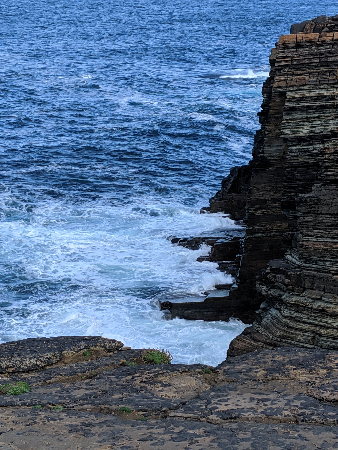
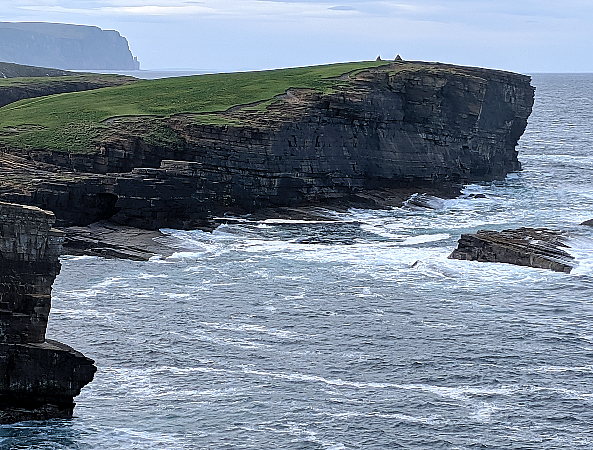
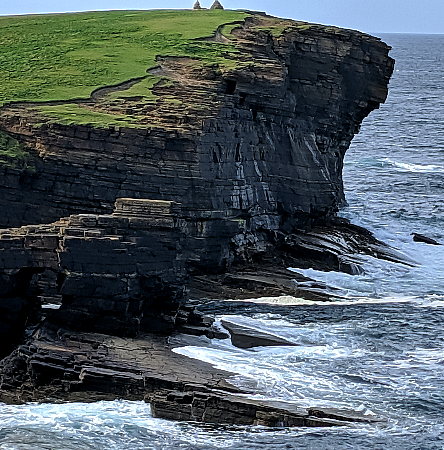
On the distant point of land stood these two cairns.
The bird didn't have a 10 foot wingspan, it was much closer to the camera.
Exposed layers of rock held clues to conditions when they were laid down.
The first looks like it was once the bottom of a shallow lake.
The second and third show a mud flat that dried and cracked before more mud washed over it.
The fourth seems to be jumble of fossilized shells.
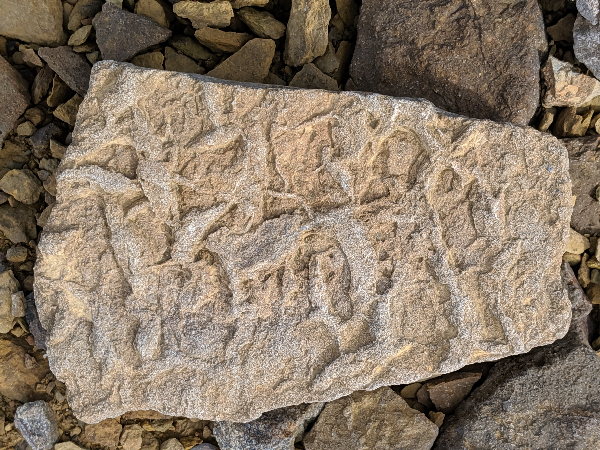
Another fishing boat on its way out to sea.
Its name is the Silver Wave.
Ancient rings of standing stones can be found in England, and Ireland as well as here and several other places in Scotland.
The Ring of Brodgar is thought to be about 5000 years old.
The ring itself is 104 meters (341 ft across) enclosed within a rock cut ditch 136 meters (446 ft) across.
The stones range from 2.1m (7 ft) to 4.7 m (15 ft.).
There were probably 60 stones originally with 36 remaining.
The wide deep ditch covered with common heather (Calluna vulgaris) surrounds the stone ring.
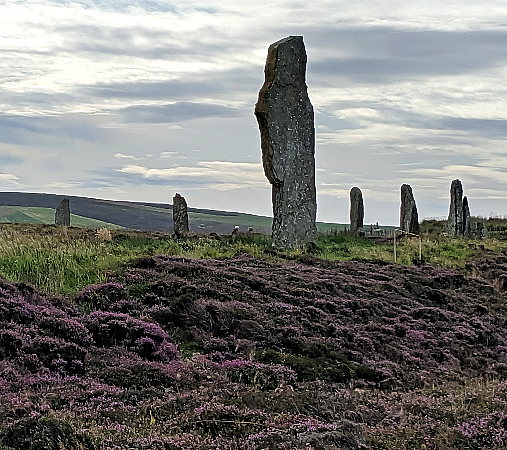
It is hard to show the scale of the ring.
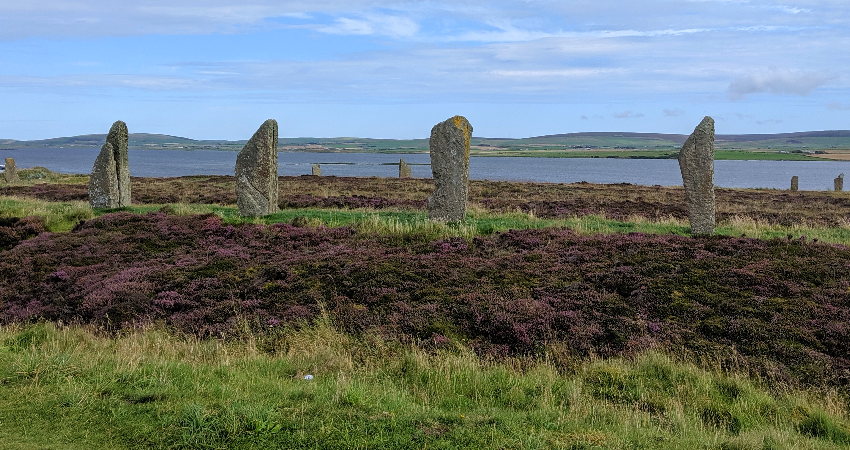


Another little part of the world that we are pleased to have visited.
An old cemetery along the highway.
The earl who built this palace was the illegitimate cousin of King James VI.
As young men they had been good friends but Patrick was known to be notoriously ambitious, arrogant and irresponsible.
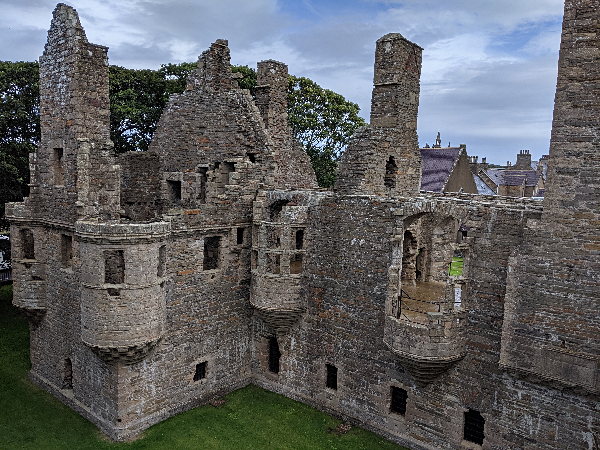
The earl incorporated the bishop's palace when he built his even grander palace.
This hearth would have required a lot of wood to produce only a little warmth in the winter.
You can see another in the second picture.
Grand windows, spiral staircases, vaulted ceilings, storerooms, and alcoves throughout give some sense of what this palace must have been like.
The earl was known as 'Black Patie' and had a reputation for cruelty and violence, and a taste for luxury that he could not afford.
Before the palace was completed he was 'drowit in debt'.
A royal decree in 1607 required him to hand it over to the bishop (who's palace he had incorporated into his own palace).
In 1609 he was imprisoned in Edinburgh and Dumbarton for 'monyfauld wrongs".
In 1610 he was indicted for treason and finally did turn it over.
I have no idea how he managed to maintain ownership for a year against the will of the king and while in prison. A good lawyer I guess.
Not that good since in 1615 he was beheaded.
With a reputation like his we were surprised to find a ring toss game for us to play on the grounds.
Here blue is about to score 50 points.
A sign on the grounds gave this history and a poem.
Now to more modern times.
The museum had this receiver from a German U-boat and badges from a German submariner.
An American radio direction finder
With directions from two of these you could plot the location of the transmitter for possible targeting.
This Top Secret radar receiver was was part of one of the worlds first wartime operational radar stations.
The museum owned this exhibit (but not on display) before it was declassified.
It was made from the original prototypes from the late 1930's.
A very simple crystal radio that required no power.
It used a galena crystal probed with a fine wire called a cat's whisker, an antenna, and ground to work.
I built one of these (nowhere near as elaborate) when I was a kid.
Electron valves (British) aka tubes (American) on display.
This knowledgeable old gentleman was ready to explain exhibits or just talk with visitors.
The original Pong.
A ham radio operator's station.
His QSL cards confirming two way communication with another radio amateur were also on display.
The museum was jammed with all sorts of electronics, radios and sound reproducing devices.
A brief stop at a nearby pub.
And a museum had these replicas of neolithic artifacts from the Orkney Islands area.
